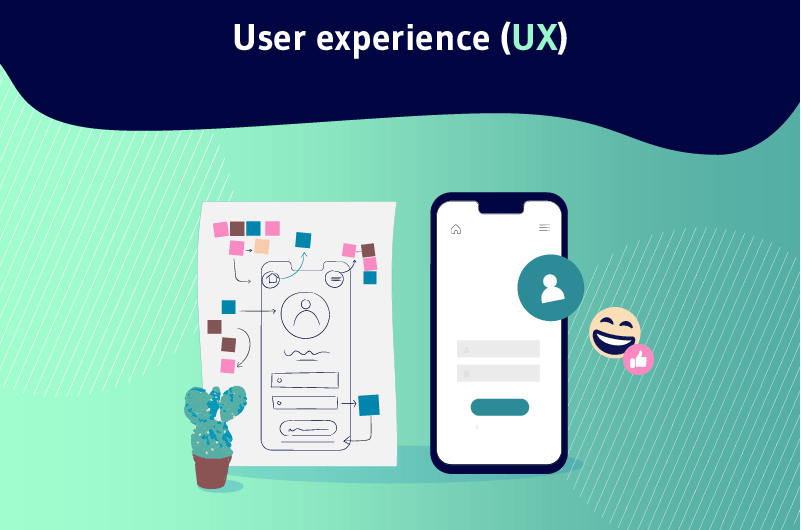From the acronym UX User eXperience,user experienceis a broad and generic term. It refers to the feeling experienced by Internet users when using or interacting with: a website, an electronic tool (smartphone, computers, tablets), a system, a software, etc. It is a very important factor in natural referencing, because it allows search engines to evaluate the level of success of a website.
In the world of SEO (Search Engine Optimization), the real challenge is to be able to satisfy the Internet users and the search engines in order to appear well in the rankings
In order to facilitate the task of website operators, Google has indicated some factors governing these rankings in its SERP.
Among these criteria, the user experience user experience appears to be one of the main ones.
A fact that has certainly not gone unnoticed, because search engines in general and Google in particular are making every effort to highlight the importance of the concept
This article is addressed to you if you are among those who are rightly wondering:
- What does user experience actually mean?
- What is the place and impact of UX in SEO?
- What are the criteria that determine the User Experience?
- How to improve the UX of your website?
Chapter 1: What does User eXperience mean?
User experience (UX) is a key element of website development and management. It seems to have an immeasurable impact on SEOand as such, it deserves to be addressed early and quickly
So discover in this chapter
- What is UX (its definition)
- What not to confuse it with;
- And how it works.
1.1. User experience: What is it in concrete terms?
1.1.1. In general: In the broadest sense of the term
Initiated by Don Norman in the 90’s, the term user experience originally referred to the manufacture and production of items adapted to consumers.
Influenced by the sciences of ergonomics and cognition, this definition has evolved over the years.
Today, the user experience can be defined as the overall feeling that one has during contact, use or interaction with “something” in one’s reality
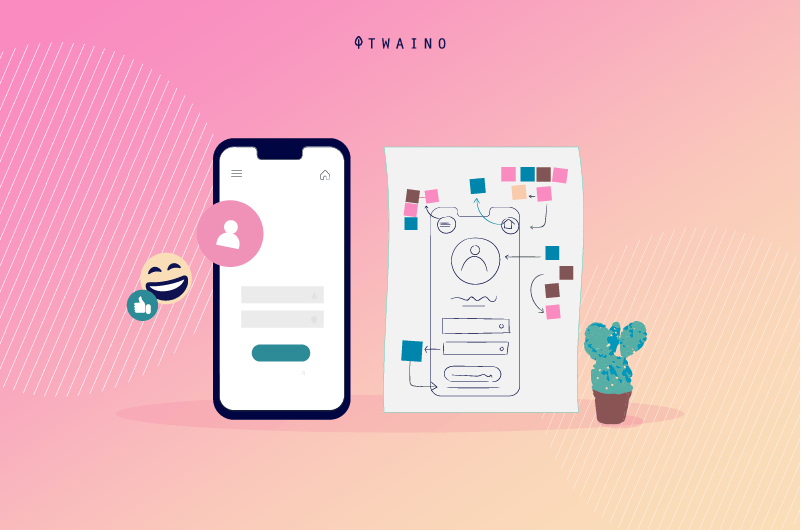
This “something” in question can literally represent almost everything and any material or digital product in our environment
- A smartphone
- An app;
- An ATM machine
- Etc.
So many everyday elements with which we have countless user experiences.
In other words, the user experience (UX) applies to every point of contact between us and the products of our daily lives.
1.1.2. In SEO: In the closest sense of the word
The concept of user experience (UX) refers to the impression that we personally have of using a website as a human
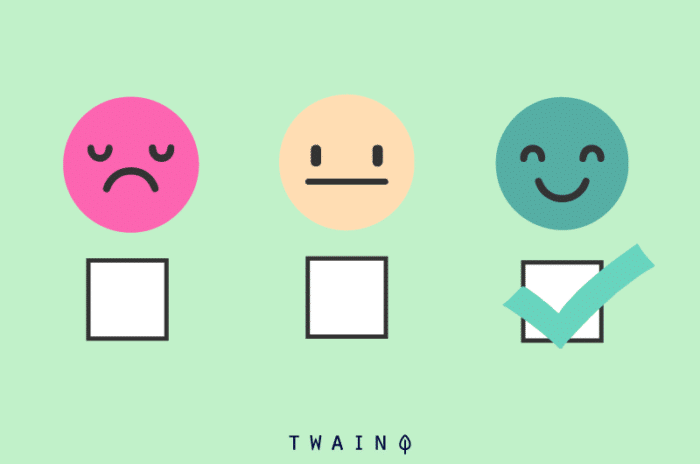
This human experience is the result of the general journey made by the user during his visit to the website. It covers everything
- The way the navigation on the website is done;
- How easy, fast and pleasant it is to browse the website;
- The relevance of the content presented on the website pages;
- And other things as well.
In short, the UX is the set of emotions that the user feels towards the website. It is therefore the quality of his interactions with the digital interface
1.2. The differential concepts of user experience
1.2.1. What should we not confuse the notion of UX with?
Yes, it is sometimes true that user experience is often and wrongly evoked in IT or among web and software developers, in the same way as certain related expressions such as
- User-centered design;
- Graphical user interface (GUI) or user interface ;
- Usability;
- Human and ergonomic factors;
- Human-computer interface;
- Etc
To say that user experience is just another element in the above list is a false assertion. And for good reason, UX takes into account everything related to the product, its presentation environment and even its installation.

Therefore, the user experience includes all of the above concepts in their entirety.
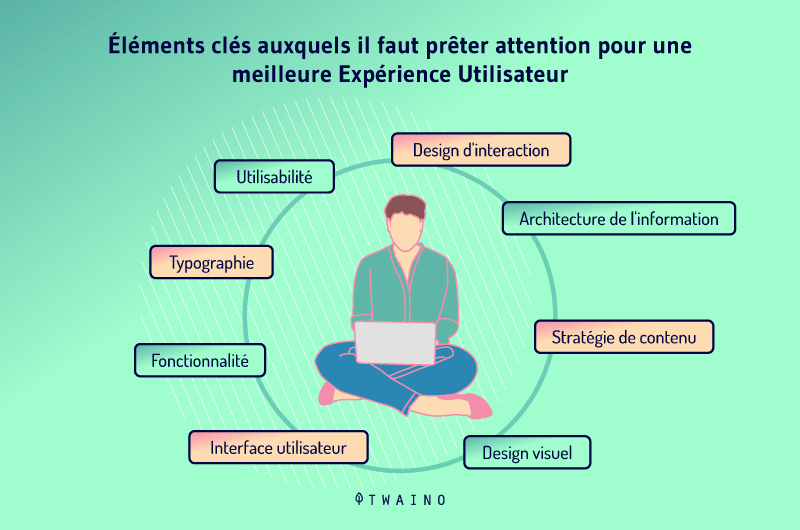
All of these different elements must be carefully developed around the user to create and maintain an exceptional UX.
1.2.2. User experience (UX) vs. User interface (UI): What is the difference?
We understand that the digital interface represents a large part of the user experience. But can we reduce the user experience to the user interface?
No !
Although the notions of user experience and user interface are often used interchangeably, when it comes to their deeper meaning, they are very different.
Translated from the English user interface or UI for short, the user interface literally represents what the user perceives with his eyes and with which he interacts.
On a website for example, it is the set formed by :
- The buttons
- The layout ;
- The search and form fields
- The navigation
- And so on
In other words, the user interface simply refers to everything the user can see, touch and click. It is also sometimes used to refer to the appearance of a product.
On the other hand, the user experience includes all aspects of the user’s experience during his stay on the website.
Furthermore, it covers how this experience (the emotion or feeling) will change over time as the consumer’s approach to use changes
It is safe to say that UX allows for a suitable interaction model for the emotional and mental satisfaction of the user.
In the end, we can say that the User experience encompasses a much wider range of elements than the User Interface.
1.3 How is the user experience explained?
1.3.1. The 5 levels of user experience according to Jesse James Garrett
Famous UX designer and computer programmer, Jesse James Garrett explains in his book The Elements of User Experiencethe user experience in 5 levels
For the professional, these 5 levels represent the different steps and components that are essential to the design of a high-performance website in terms of UX
Still called the 5 S’s, these steps are schematized as follows:

1.3.1.1. The website strategy
It is at this stage that the objectives of the website are defined according to the needs, expectations and intentions of users. In other words, we determine the purpose of the website, the reason for its creation. It is indeed necessary for the user to understand the interest of the website.
1.3.1.2. The scope: Functionality and content
In harmony with the strategic objectives previously defined, the functional requirements and content requirements of the website must be determined. The functional requirements refer to the functionalities that the user needs on the site to achieve these goals. Content requirements are the data needed to add value.
1.3.1.3. The structure or architecture
This is where the user’s interactions with the website’s functionality are predefined. How does the system react to the user, its organization, its hierarchy and to what extent? The goal here is to simplify the user’s actions and provide him with intuitive access to information.
1.3.1.4. The skeleton
In a word, this is the layout. It is the tree structure of the website. The different elements of the website must be distributed in such a way as to facilitate the user’s movements and to highlight the information presented in order to make it efficient, clear and obvious.
1.3.1.5. The surface: Visual design (sensory design)
The last step, it represents the sum of all the decisions taken previously. It is a decisive element, because it represents the final visual presentation that the user will see. It is really about the aesthetic aspect of the website pages. We must work to choose
- The right layout
- The right colors
- The typography ;
- The images
- The videos;
- Etc
Sometimes acting as a standard, these different steps are general and should be applied in accordance with current user needs and trends. And for good reason, the place of social networks and adaptability to mobile (essential criteria in SEO) do not appear in this method for example.
1.3.2. In concrete terms, what does the UX of a website mean?
The idea behind the notion of UX is to make the customer’s journey pleasant and productive as a whole.
To reach this ideal, the efforts made in the direction of a good user experience are mainly focused on highlighting the value of the proposed solution
Indeed, it is essential for the user to be assured that the solutions presented on your website are adapted to his needs.
It is estimated that 61 % of users choose not to purchase a product online when the reassurance elements are missing.
So to speak, the skills and benefits that the product or service offered can provide to potential and current customers must be well defined. Everything must be done in such a way that your value proposition is perfectly tailored to the user.
In more practical terms, it’s about providing clear wording and quality images with a short, simple and straightforward path to highlight the product and its potential
In other words, the UX tends to make the added value of your product available and accessible to Internet users.
The user experience must be able to stimulate engagement, use and adoption of the product. An interesting property that implies a meticulous upstream work
Indeed, the experience for prospects and customers must be, from the start, fluid and natural through an intuitive interface with a clear and precise navigation hierarchy.
In other words, the path must allow for easy and natural navigation that requires no effort on the part of the user to reach their goal
And for good reason, 47 % of visitors first go to the products and services before inquiring about the other sections of the website. In light of this, user experience simply simplifies the steps required to complete various tasks.
Furthermore, it refines the interactions with consumers by removing the grey areas and other friction points that can frustrate them.
As the product evolves, the user experience itself can evolve. It can be extended to related tasks that have a direct impact on the value proposition and user satisfaction of the product
These different objectives are achieved by applying a variety of tactics to better understand the real needs of users
When these requirements are not met, the user experience becomes poor and the consequences of a poor UX are very deleterious to the business.
Chapter 2: User Experience – Why bother?
Now you probably have a vague idea of how important user experience can be.
But in concrete terms, why should you care about user experience?
2.1. What is the value of user experience?
2.1.1. User experience – A must in the digital age
With the increased emergence of automated and digitalized solutions, human intervention is becoming rare in the process of delivering services and products.
This being the case, the intervention of the user experience is becoming essential. This is because it ensures that the proposed software approaches are able to anticipate and respond effectively to the intentions, expectations, needs and habits of consumers.
On the other hand, in the SEO industry, providing a good user experience is clearly a necessity. It is even the first thing to do for an effective SEO strategy.
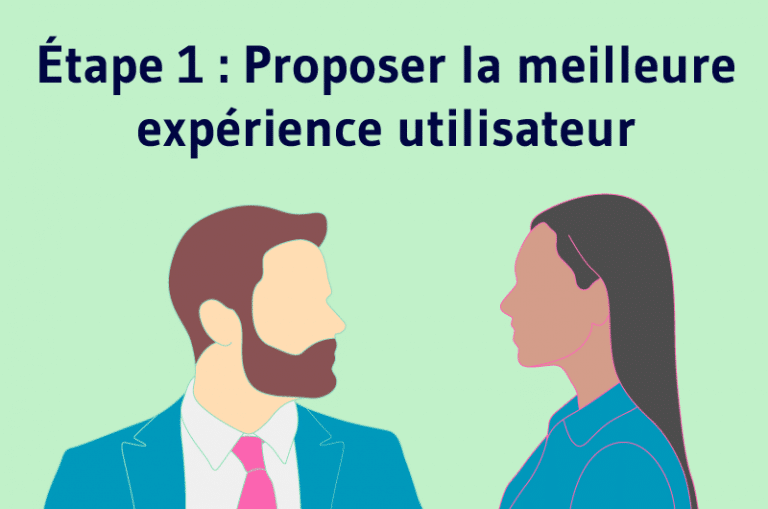
Today, to stay competitive, every company needs to have a solid online presence. When you say web presence, you certainly mean website. If your company has a website, the user experience of that website will play a key role in attracting and retaining your potential and actual customers.
For most of your prospects, you will usually only have one chance to convince them to choose you. It is therefore essential to be well prepared.
2.1.2. The benefits of UX: What are the benefits of having a good user experience?
What do you think will happen if a consumer visits your website and does not find the solution to his problem? What do you think will happen if your customers can’t figure out how to use your online store?
It’s simple, every time a user struggles with your digital signage, they will decide that your business is not worth it
It is important to know that 68 % of visitors leave a website because of a bad UX. The majority of visitors decide within a few seconds whether they want to stay on your website or move on and click the “back” button.
On the other hand, if the user experience is exemplary, it is likely toincrease your website traffic. In addition, a great UX will lead to successful conversions which will clearly translate into higher revenues.
In short, the experience the user has of your website has influenced his decision to buy, subscribe or look elsewhere.
Yes, the business stakes associated with the quality of the user experience are incredibly high. A new marketing approach that has been named SXO (Search eXperience Optimization). This optimization technique mixes the user experience with the SEO classics in order to maximize the conversion rate.
It is clear why 93 % of business leaders believe that optimizing the user experience is a strategic priority in the race against the competition.
There’s no doubt about it, the user experience is undeniably more important than ever in the SEO industry.
2.2. What do search engines think about the user experience?
2.2.1. A unanimous, clear and well-established opinion
For the search engines the priority is to provide the best to their users. A mission that cannot be accomplished if the first results of the SERP include websites that do not offer an exceptional user experience.
When you think about it, Google’s primary goal is to provide users with the best user experience.
All search engines agree with the search giant that it is essential for website operators to offer a quality user experience.
Various studies have clearly shown the preference of Internet users for websites offering an excellent experience. Given this state of affairs, Google has quickly focused on user experience (one of its main criteria for ranking search results)
As a confirmation, the search giant has announced that in 2021the UX is now a unanimous pillar of natural referencing.
Indeed, if content is king, its organization is even more essential. Offering original content is only one of the many steps necessary to create a top quality website in terms of SEO.
In addition to being original, the content must also be informative, structured with a good distribution on the website to facilitate the navigation of cybernauts.
Google recommends reviewing the organization of the various elements contained on the pages of the website (images, text, videos, etc.). It also advises website owners to ensure that their layout is user-friendly and that visitors can easily and quickly identify the content they are looking for.
2.2.2. Google’s main action on UX
True to its reputation, the search engine walks the talk
L’algorithm Google is famous for its regular updates that ensure unparalleled performance in the search world and allow it to always offer the best browsing experience to its users.
In this same perspective, the search leader decided to improve its algorithm by implementing a new update named Google Page Experience.
Just like the updates Google Caffeine updates in 2010, Google Panda in 2011 or Google Penguin in 2012, Google Page Experience of May 2021 is a major update
Coming to emphasize the user experience, Google takes with this new algorithm, the great initiative to highlight websites that offer users a quality UX.
These websites respecting the new criteria of Google Page Experience will be valued by the search engine in the SERPs. In addition, these websites will perform better.
On the other hand, websites with a poorly optimized user experience may see their ranking in the SERPs drop. And for good reason, users disappointed and frustrated by a bad experience will leave the website, which will result in an increase in the bounce rate.
If despite the various announcements and best practices given by the search engine, the importance of UX was not clear, now there is no doubt.
In order to effectively prepare your website’s SEO to the new algorithm of the search giant, I suggest you learn a little more about the Google Page Experience.
Chapter 3: What influences the UX and how to refine it?
In this chapter we will see the different elements that determine the UX and then how to manipulate them for your website optimization
3.1 The main criteria of the user experience
There are many elements that impact the UX. Nevertheless, we can say that the user experience of a website is mainly influenced by :
- A simple, friendly and pleasant ergonomics of the user interface;
- The structure of the site;
- The loading speed of the website pages;
- The responsiveness with mobile devices;
- And so on.
To summarize, we can group the main issues inherent to a good UX under 4 main entities.
- Relevance relevance : does the information proposed on the website have an added value ? Are the features presented useful for the user?
- Usability is the interface intuitive and fluid? Is the internal linkage optimized?
- Adaptability is the website correctly adapted to all digital media (mobile, tablet or computer)?
- Efficiency how long does it take for the web pages to load?
3.1.1. The relevance of the proposed content
The importance of the quality of the content in a natural referencing strategy is not to be demonstrated anymore. In terms of UX, it is more important for a website to offer only relevant and unique content to users.
The idea is to satisfy the needs of visitors to your website and encourage them to return.
To do this, it is advisable to always make sure that the proposed content offers a real interest to visitors. It is also advisable to regularly update the content presented on the website.
Finally, the content of your website must comply in all respects with the Webmaster Guidelines of Google
Learn how to produce quality text with the complete guide to web writing.
3.1.2. Website usability: Optimizing navigation and ergonomics
3.1.2.1. Navigation on the website
The degree of ease with which the user can browse the website and access the desired information is very important. As we have seen throughout this content, the usability of the website is a non-negotiable factor in user experience.
The goal is to ensure that the user’s navigation is fluid, clear and concise. The user must be able to easily (in less than 3 clicks) find what he is looking for. Even more, they must be able to feel a certain satisfaction in navigating the website.
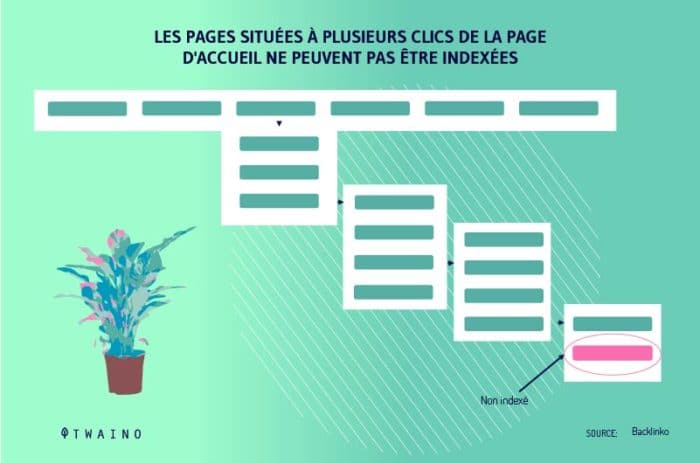
Find out how to facilitate navigation and make your content easily accessible by following the recommendations from Google.
3.1.2.2 Ergonomics: the architectural organization of the website
As a determining element of usability, it is important to remember that a good site architecture :
- Helps to strengthen the overall authority of the website ;
- Allows the optimization of the crawl and theindexing of web pages;
- Etc
It is therefore advisable to ban interstitials and other intrusive advertisements from the website, which can disturb and frustrate the user.

3.1.3. The adaptability of web pages
It goes without saying that user experience means Mobile friendly

The responsive design, that is to say the ability of a website to adapt to the screen size available has become the standard with the advent of Google Mobile first indexing
The mobile first index means that the search giant mobilizes almost all its crawlers for the priority analysis of the mobile version of websites. It has been estimated that in 2021, the proportion of mobile users should represent 61 % of global internet traffic.
It is understandable that the adaptability of the website to mobile is a major criterion of user experience. In order to ensure that your pages are perfectly compatible with mobile for a quality UX, consult the chapter 3 of the article on Mobile friendly.
3.1.4. Website efficiency: optimal loading speed
Considered since ever by Google as one of the main criteria for ranking in SERPs, the loading time of web pages is what we first think about when we talk about UX.
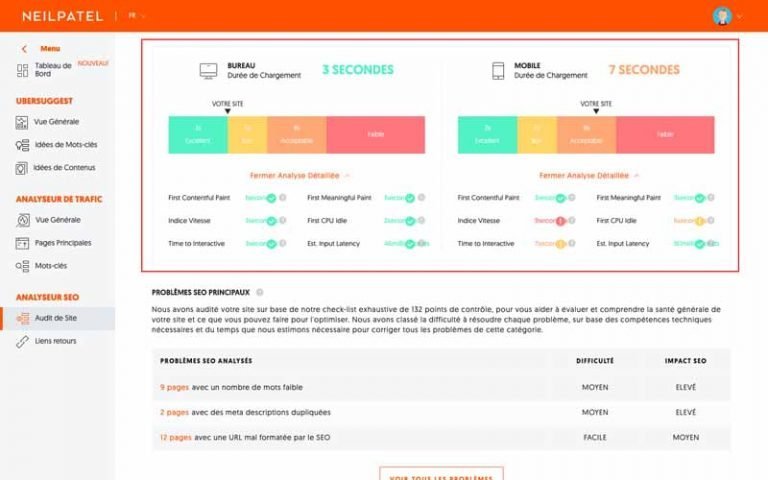
With the new Google algorithm update, the importance given to this parameter is increasing more and more
Indeed, the role of loading speed is crucial for a good user experience. When a page takes too long to load, the user quickly becomes impatient and moves on. A situation that we have seen as being catastrophic for the SEO of the website
It is therefore essential to work on the loading time of its website for a better user experience and a better positioning in the SERPs.

Most of the sEO consultants consultants agree that each web page must load rigorously in less than 3 seconds.
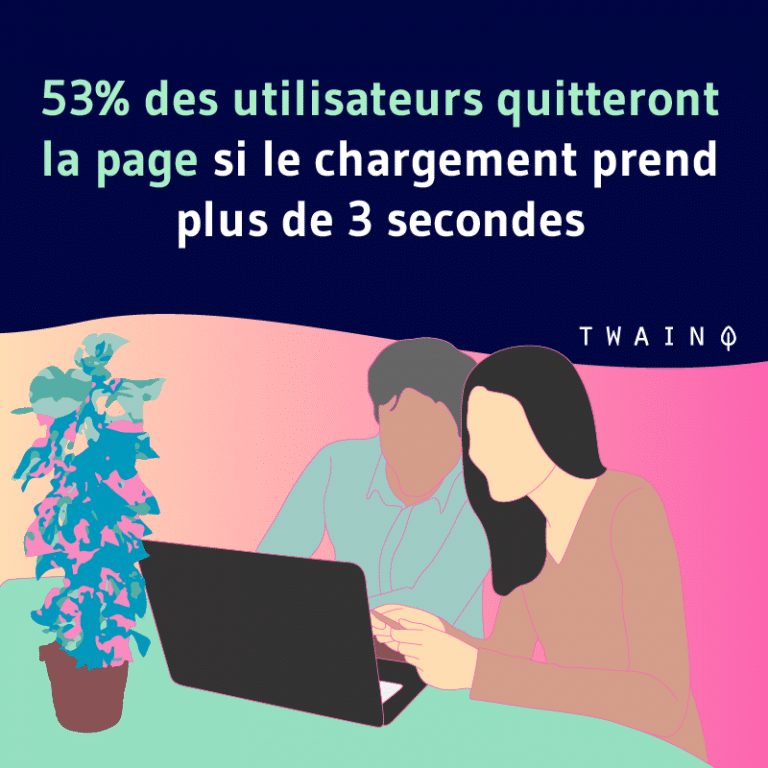
It is essential to know how to optimize the loading speed of your website. To do this, many tools to test and correct the loading time if necessary for a quality UX, are presented in this article.
3.2. Improving the UX of your website: How to go about it?
Before starting, you should ask yourself the right questions.
- What happens when a web user visits your website for the first time?
- Do the web pages load quickly?
- Can users tell that they are in the right place?
- Is it obvious what to do next?
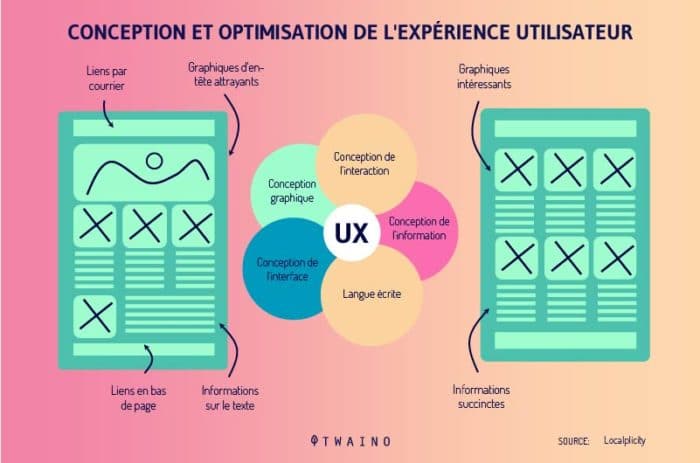
All you have to do is answer positively to all the above questions and you’re done. To do this well, you can proceed as follows.
3.2.1. Evaluate the performance of your website in terms of user experience
Unless you have conducted concrete tests, everything you think you know about the user experience of your website is pure speculation and conjecture.

In order to do an effective optimization job, it is important to base yourself on real data and verify the UX of your website.
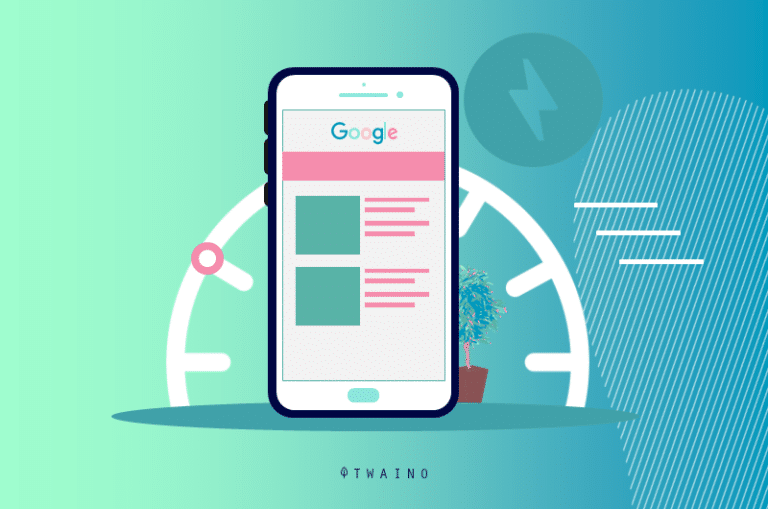
To do this, it is necessary to rely on objective and qualitative UX metrics. The different steps of this unavoidable test procedure are fully detailed by Neilpatel.
3.2.2. Choose the right web design to optimize your UX
Now that you are fully aware of the shortcomings of your website from a user experience point of view, all you have to do is correct them.
You have three development alternatives that could allow you to create a more seamless and faster user experience.
- L’AMP (Accelerated Mobile Pages)
- Responsive web design
- The Progressive web Apps (PWA)
3.2.3. Always prioritize mobile in your SEO strategies
With mobile-first indexing, it is important to give priority to the mobile version of your website
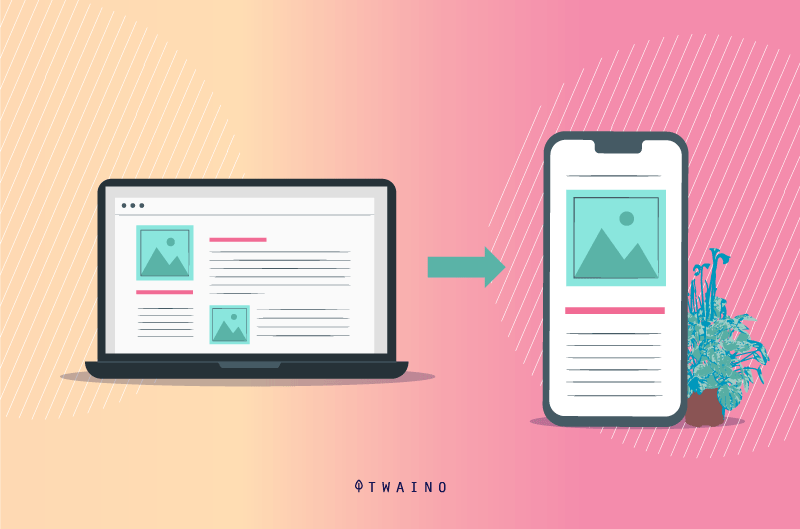
It becomes essential to :
- Ensure that the mobile version of your website contains exactly the same content as the desktop version;
- Offer structured data on all versions of the website;
- Ensure that the metadata matches on the different versions of your website.
For more information on optimizing your website for the mobile index see the article on Mobile first indexing.
In summary
Through this article, we will remember that the User experience has become an inseparable component of SEO.
As a witness to the quality of the user’s experience, offering an exceptional user experience is now common sense even beyond the boundaries of SEO.
You’ve had the opportunity to fully understand the concept of user experience, its place in SEO, and you now know the different elements that determine its quality.
To take advantage of the many benefits of UX in SEO, or in other words, to take advantage of the benefits of SXO, it is advisable, in addition to the usual SEO criteria, to ensure that you have :
- A unique, original and relevant content;
- An optimal loading speed (less than 3 seconds) for your web pages on computer and mobile;
- A responsive design site that adapts easily to all types of screens;
- An ergonomic and easy navigation, fast and pleasant.
Here we are at the end of this development, I hope it has allowed you to deepen your knowledge. Don’t hesitate to leave your opinions and experiences in terms of UX in the comments.
See you soon!

